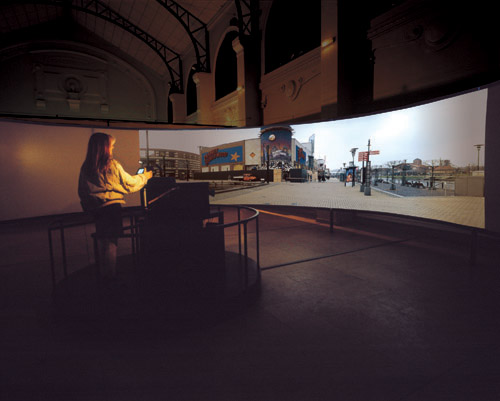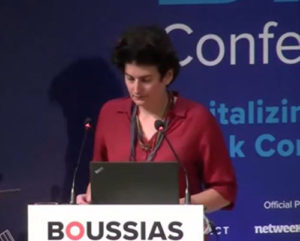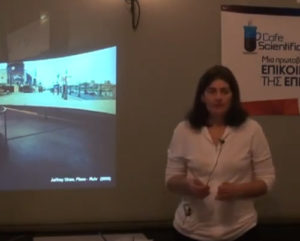
PhD Thesis: The Spatial Properties of the Projection System in the Work of Jeffrey Shaw
Reference: Venetsianou. O. (2014). The Spatial Properties of the Projection System in the Work of Jeffrey Shaw. Volos: PhD in the Department of Architecture, University of Thessaly
Image: Jeffrey Shaw, Place – Ruhr (2000), source: http://www.jeffrey-shaw.net/
Abstract
The modern viewer is familiar with the cinematic paradigm, in which he or she is fixed in a darkened auditorium. In this case, the projected image acts as a viewing window into the picture space. However, the current audio-visual technologies introduce new viewing modes. So, what happens when the projection system is designed as an integral part of the projected image? What are the consequences regarding the viewer’s role and the spatial properties of the projection system?
This thesis is based on three axes: The spatial properties of the projection system, the viewer’s position and the use of earlier media forms in the digital environment. The thesis traces the spatial evolution of the projection system (projector, screen surface, projection beam), during the transition from analogue to digital technology, in inter-war experimental film, 1960s expanded cinema, video art and current multimedia installations. The work of the Australian-born new media artist and researcher Jeffrey Shaw is used as a case-study. Shaw emerged from the performance, expanded cinema and installation paradigms of the 1960s, currently being a leading figure in new media art.
It is concluded that when the interaction with the projection system is based on the viewer’s position, the level of participation in the spatial arrangement of the projection system increases during the transition from analogue to digital technology. The installation works as an optical machine that upgrades the viewer to active participant and enables him or her to experience the work in a unique way. In regards to the spatial arrangement of the projection system, the fields that are noted to be modified are the size and shape of the projection screen, the viewer’s movement within the installation and the strategies combining virtual and haptic space.

BIM applications in architectural education
BIM conference, organized by the Technical Chamber of Greece
Click here for presentation video.

“The Architecture of the Screen”
Presentation in the Café Scientifique, a grassroots public science initiative, committed to promoting public engagement with science.
Click here for presentation video.